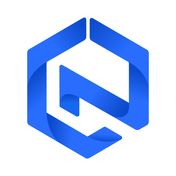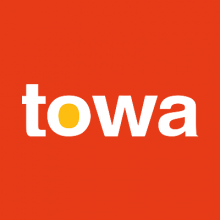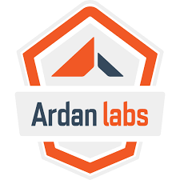Explore Top Go development Companies in United States
Use the advanced filter to find companies near you or refine the results Last updated in: November, 2025
Cyber Nest, based in Brooklyn NY, USA, is a top software development and implementation firm specializing in custom solutions and advanced technology.
Best Digital Marketing and Software Services in USA
Services:
Our AI-backed Intelligent Talent Cloud helps you source, vet, match and manage the world's best software developers remotely.
Services:
Vettify is a SaaS platform enabling you to share & track brand images online. It offers SEO benefits, analytics, rights management and authenticity.
Services:
Deep Learn HQ builds scalable mobile, web, and AI solutions—turning complex problems into seamless, user-focused digital experiences.

Fifth | Software Development Verified Company
Van Nuys, United States Head office in: Armenia
Software Design and Development Studio
Dedicated Software Engineering Teams from Mexico, top A-performers, and competitive pricing. Team Augmentation services for leading companies.
Services:
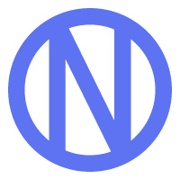
Los Angeles, United States Head office in: Argentina
We craft digital products

Cloudester Software LLC Verified Company
Chicago, United States Head office in: United States
AI-Driven Software Development Company

Dallas, United States Head office in: United States
The BHW Group is a turn-key digital product agency that specializes in mobile and web app design and development. Over the past thirteen years, we hav...
Services:
Codism LLC is a global technology and business services consulting firm specializing in Business and IT Consulting Services to commercial and private...
Services:
We are your unfair advantage in building SaaS Solutions. Are you looking for a reliable Software Development Agency with proven expertise in building...
Lofty is a digital product consultancy that creates data-driven applications for disruptive companies. We help firms re-imagine service delivery with...
Since 2007, Devvela has helped businesses that range from daring startups and local brick-and-mortars to Fortune 100 enterprises leverage the power of...
Services:
WeDigTech is a trusted and leading end-to-end design-led digital product development and consulting IT company with its presence in more than 10 count...
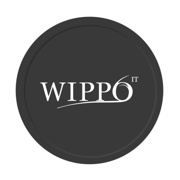
Washington, United States Head office in: Moldova
Wippo IT develops diverse custom digital solutions for small, medium-sized and enterprise-grade businesses that streamline, automate and optimize bus...
We develop custom IT solutions for tech startups and small businesses that require deep expertise across multiple IT fields. Our company builds MVPs,...
Trusted by Start-ups to Fortune 500 Companies, Ardan Labs is a high-performance software development and training firm that has been delivering reliab...
Cafeto is a global software development company with a presence in the United States and Latin America to help companies build their dream products by...
Velmie is a team of passionate tech-nerds and experienced business advisors with access to bleeding edge technology, training and strategic business i...
Services:

Los Angeles, United States Head office in: United States
Human Design is a multidisciplinary agency that focuses on advertising, video production, technology development, and design. Headquartered in Boulder...
Services:
Want to keep pace with modern trends? Interested in digitalization? Looking for someone to change your business? Need to create a personal application...
Services:

Boulder, United States Head office in: United States
Culture Foundry helps you thrive in digital. Our uncommon strengths: Design Systems We deliver great design via component-based systems that unify nav...
Filter Go development Companies in United States by Cities
Find the right tech company near you or from a specific city. Some of the best companies might be located in smaller cities.
Find more Go development companies around the world
TechBehemoths is the world's most advanced and user-friendly platform to match IT Companies with real clients without hustle.
ICT in the United States: General Profile and Insights
The United States has probably the most advanced software and information technology (IT) services industry in the world. More than 40 percent of the $5 trillion global IT market is in North America, primarily the United States. The industry accounts for $2.1 trillion of U.S. value-added GDP (more than 10 percent of the national economy) and 702.276 jobs. According to CompTIA, there are more than 700,000 software and IT services companies in the United States.
The average net salary of a web developer in the US is around $82,532 annually. On the other hand, the hourly rate is nearly $33.47, which makes it one of the best-paid jobs in the world within the IT industry.
Why Should You Work With American Web & Software Development Companies
U.S. software development companies operate in a mature, harmonized market and have a reputation for producing reliable and effective solutions that quickly accelerate to the marketplace. International companies in the industry have shown interest in the U.S. market because of its strong intellectual property rights laws and enforcement. U.S. companies lead the world's packaged and custom-software markets and are competitive in nearly all other market segments with a stable overseas market share.
What You Should Be Aware of When Working With a US-based ICT Company
Having a large IT market has both advantages and disadvantages. While offering a wider variety of US IT companies to choose from is one of the biggest advantages the U.S. has to offer, the challenge for potential clients and partners of the U.S.-based web & IT companies is that the industry development is not equally distributed across all states and cities. For example, many tech companies are relocating to Texas from Silicon Valley. This is why it’s good to have in mind the most important U.S. IT hubs and focus on choosing the most suitable one depending on your needs.
How Reliable are US-based IT Companies
Based on a report delivered by CompTIA in 2020, which is still relevant for 2025, the changes in the global IT market that make competition in this area tougher, U.S. companies will focus more on three development pillars:
- Training and Certification of professionals in their existing tech skills
- Training and Certification of professionals in new tech skills
- Career growth and project management.
This means that the market is saturated with the workforce, and there is a small probability that companies will increase their hiring rate for new professionals. However, intensive and extensive skills development of U.S. tech professionals will increase the capacity and attractiveness of U.S. IT companies and web agencies. Additionally, this will improve the already well-developed abilities to deliver high-end products and services in the IT field.
How Does the US IT Industry Relate to the Neighboring Countries
Considering that the US has probably the most developed IT infrastructure, the industry will keep its position for at least 3 years. On the other hand, the rising numbers of IT companies from Canada and Mexico come in contrast with what US companies have to offer. In other words, clients still have to choose between US companies and neighboring countries as the offers differ in quality and ways of executing projects.
Overall, the US IT industry is in leading positions in different sectors, and combined with an authentic business culture, will probably continue to keep its attractiveness. Although companies from the U.S. are flexible and are always adjusting to market requirements, the global market still remains unpredictable, which may lead to significant changes in the future.
US Tech Industry Outlook for 2025 and Beyond
The US is still leading the world with its cutting-edge technologies, despite some narratives. The expected revenue for the market of IT Services in the US is $563.94 billion by 2025, with a CAGR of 3.73% from 2025-2030, according to Statista. The biggest segment of this segment is IT Outsourcing, reaching $218.02 billion by the same year. This sector has an increased demand for solutions in cloud computing and cybersecurity services.
Artificial Intelligence will influence the tech sector in the US, with only the Generative AI contribution to GDP of $7 trillion in the next 10 years, and it can save up to $1.4 billion for the federal government.
The US is keeping its position in scientific research, graduate education, AI firms, and competitiveness. The US tech sector’s future focuses include AI, increasing cybersecurity & cloud computing.
What is Go and what are its benefits for your projects?
Go, also known as Golang, is an open-source programming language created by Google. It is designed for simplicity, efficiency, and concurrency, making it a versatile choice for building a wide range of applications, from web services to system software.
More than 363 verified IT companies leverage Go in their development projects. These companies range from startups to tech giants like Google, Uber, and Dropbox. They appreciate Go's speed, reliability, and ease of use for building scalable and performant software.
Go service providers rely on various tools and technologies to enhance their development process. Some commonly used tools include the Go compiler, which transforms Go code into executable binaries, and the Go standard library, which offers essential packages for building applications. In terms of deployment, containerization technologies like Docker are frequently used to package Go applications for consistency and portability.
You may be wondering, how is Go Different from C, Rust, and Java. So, below we’ll try to show you more about the differences that exist between them:
-
Go vs. C: While both Go and C are low-level languages, Go offers modern features like garbage collection and memory safety, which simplify programming. Go is also more concise and expressive than C, making it easier to read and maintain. But if you think your business needs companies that also specialize in C, you can find them on this page
-
Go vs. Rust: Rust emphasizes memory safety and control without sacrificing performance. While Go offers simplicity and readability, Rust provides fine-grained control over memory and is suitable for systems programming with a focus on safety.
-
Go vs. Java: Java is a high-level language often used for building enterprise-level applications. It relies on a virtual machine (JVM) and is known for platform independence. Go, on the other hand, compiles native code, offering better performance and efficiency for certain use cases.
Languages related to Go in terms of use cases and features include Python, Ruby, and Node.js. These languages, like Go, are suitable for building web services and backend applications and are known for their developer-friendly features. If you need these programming languages in addition or instead of Go, just click on their corresponding words above to find verified vendors providing those services.
When selecting IT companies that use Go for your project, consider factors such as the company's experience with Go, their portfolio of past projects, client references, and their understanding of your specific project requirements. Look for companies that align with your project's complexity, scalability needs, and budget.
Go service providers are essential for various project types, including:
-
Web Services: Go is well-suited for building RESTful APIs and microservices due to its excellent performance and simplicity.
-
Networking Applications: Go's concurrency support makes it ideal for developing network-related software such as servers and proxies.
-
Cloud Applications: Go's efficiency and speed are valuable for building cloud-native applications and serverless functions.
-
System Software: Go can be used for developing system utilities, command-line tools, and operating system components.
Go is a versatile language, and its speed, simplicity, and efficient concurrency model make it suitable for a wide range of projects, making it an excellent choice for modern software development.
